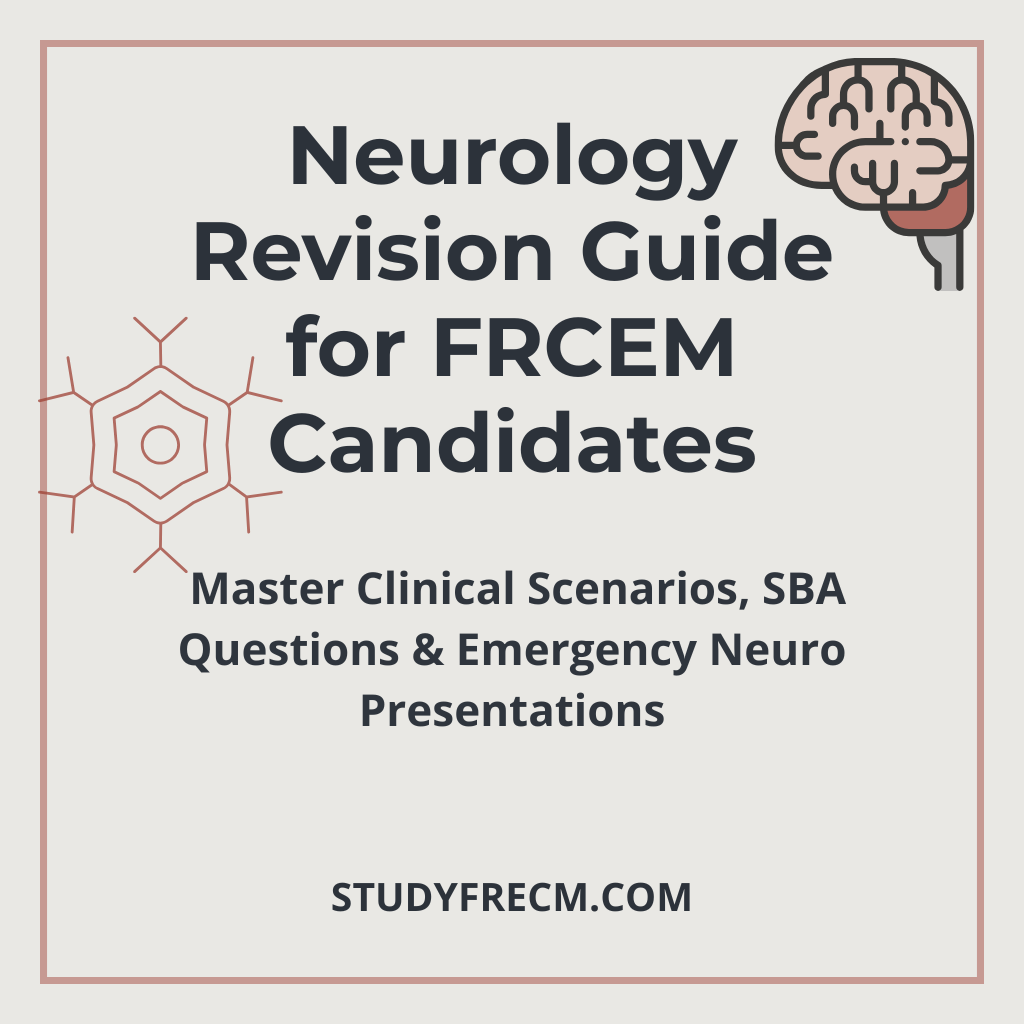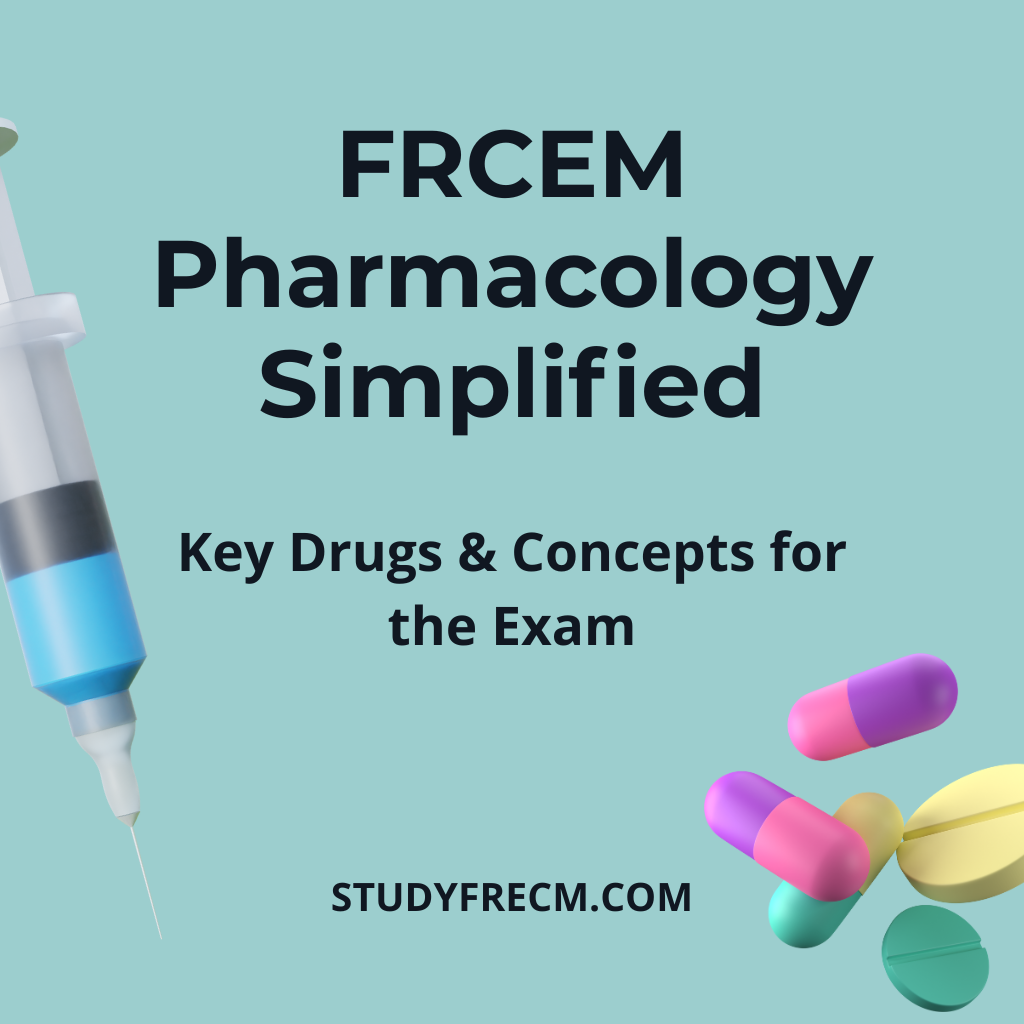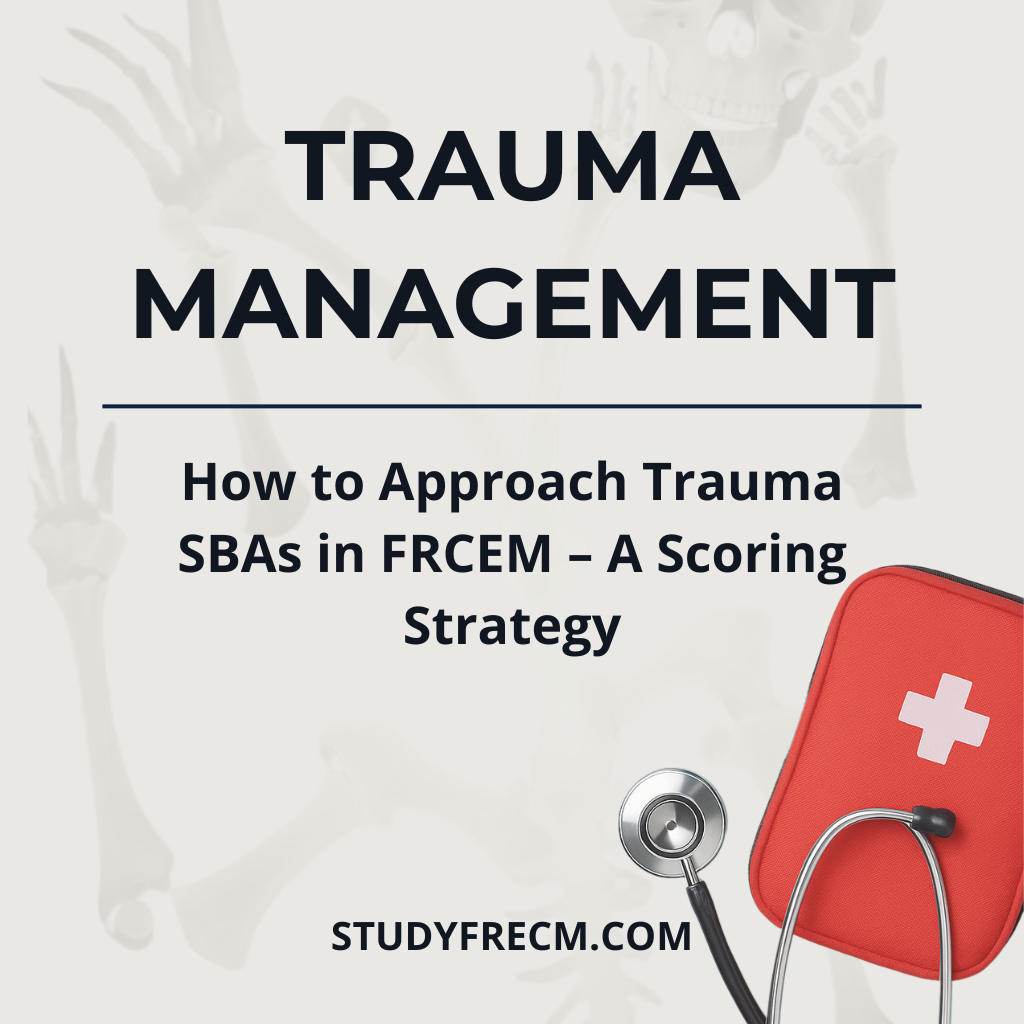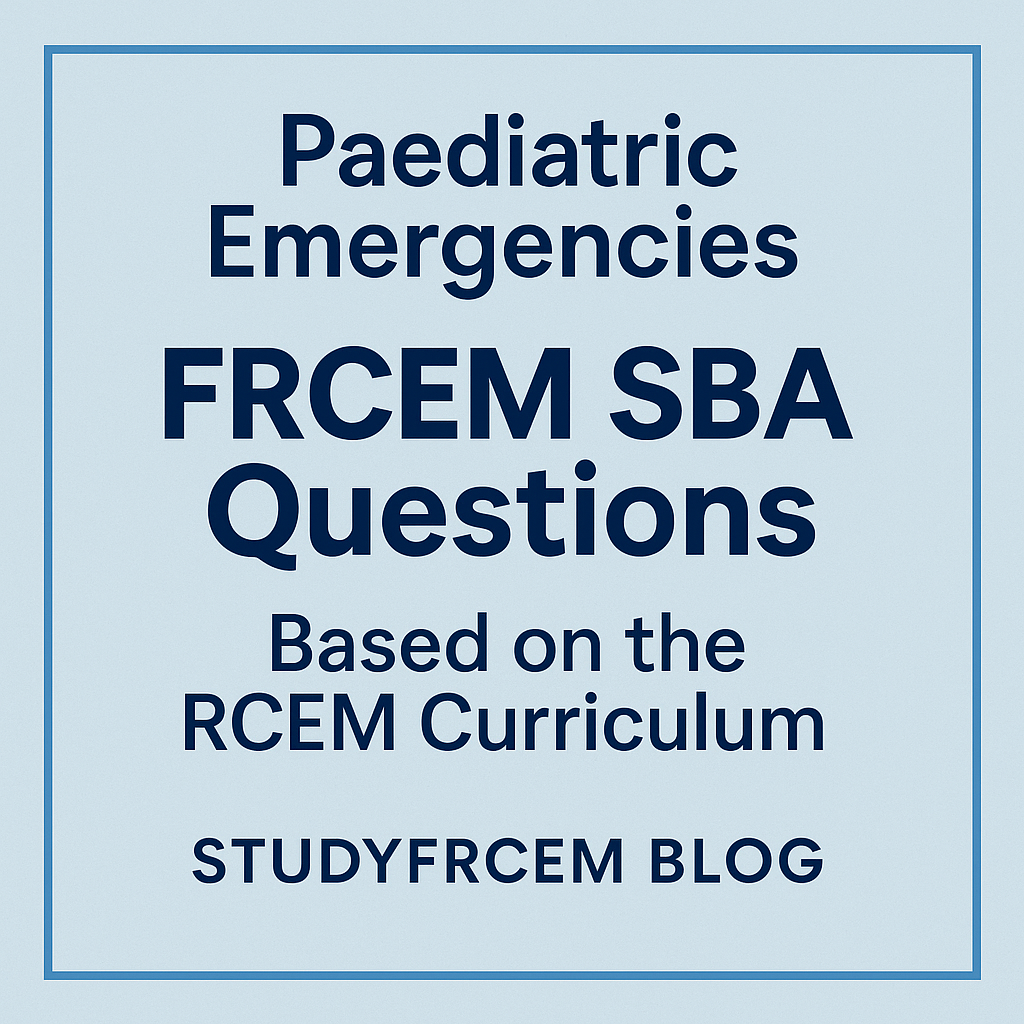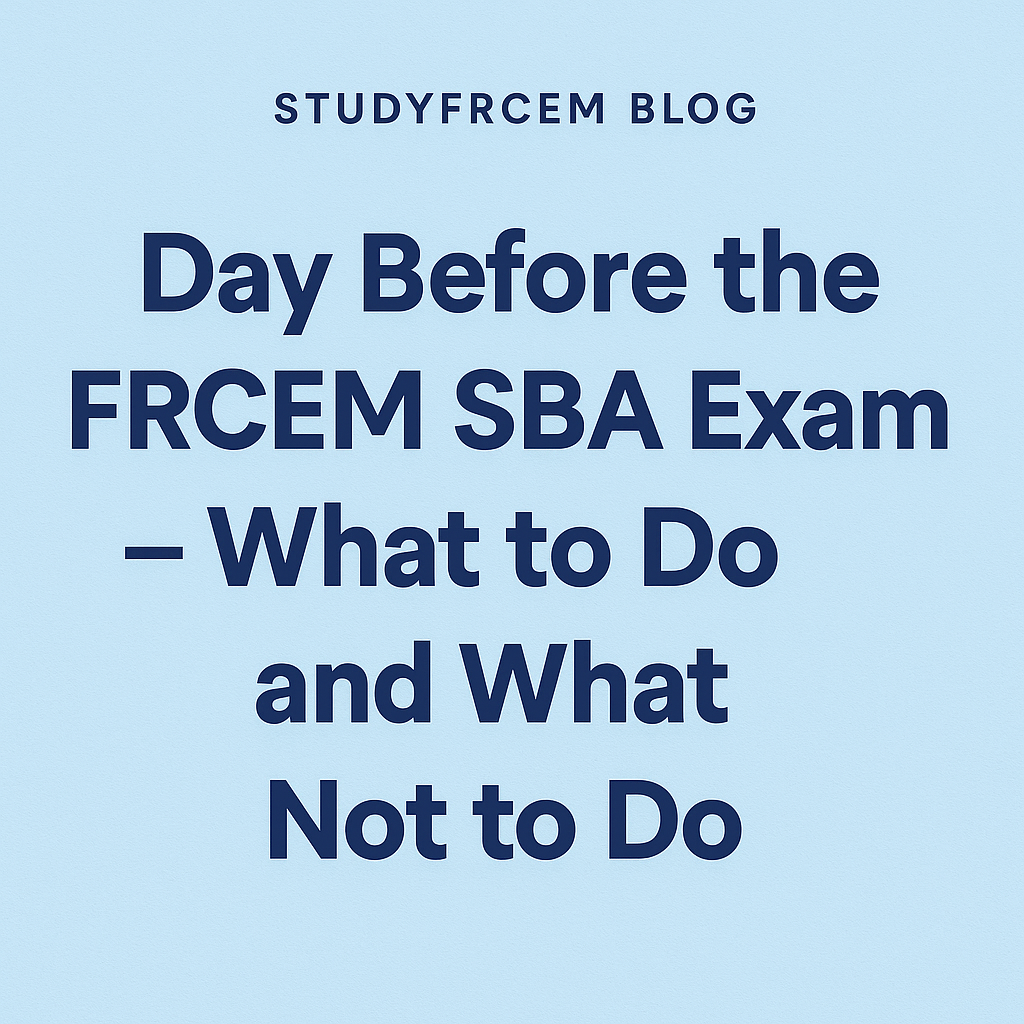Navigating the world of neurology can feel overwhelming because of its intricate nature. If you're pursuing the FRCEM (Fellowship of the Royal College of Emergency Medicine), you'll need to grasp the presentation, diagnosis, and management of both common and critical neurological conditions.
When tackling your FRCEM SBA, expect questions to revolve around:
- Clinical scenarios (like sudden-onset weakness)
- Interpreting imaging results
- Treatment protocols (such as stroke thrombolysis)
- Differences in pediatric and adult neurological conditions
Key Neurological Conditions
Check out these high-yield conditions to keep in mind:
- Stroke / TIA
- Status epilepticus
- Multiple sclerosis (MS)
- Myasthenia gravis
- Guillain-Barré syndrome
- Meningitis / Encephalitis
- Subarachnoid hemorrhage
- Cluster / Migraine headaches
- Raised intracranial pressure
- Space-occupying lesions
SBA Tip: Often, the most appropriate next investigation is requested, so understanding the diagnostic pathway is crucial.
Neuroanatomy & Neurophysiology Essentials
You don’t have to be a neuroscientist, but it’s a good idea to brush up on a few key topics:
- Cranial nerves (especially III, V, VII, IX, X, XII)
- The difference between motor and sensory pathways
- Understanding dermatomes and myotomes
- Brainstem functions and how to localize lesions
- Spinal cord tracts: spinothalamic versus dorsal column
Emergency Neurology – Red Flag Symptoms
Here are some common red flag symptoms to watch out for:
- A sudden, intense headache that feels like the "worst headache of my life"
- Any focal neurological deficits
- Loss of consciousness
- A seizure in someone over 25 who has no prior history
- Fever accompanied by altered mental status
- Visual disturbances or double vision
It's crucial to act quickly, as differential diagnosis is essential in these situations.
Read more: Trauma Management – Curriculum-Based Approach.
Stroke Management
Ischaemic Stroke:
- Remember the ABCDE approach → FAST → NIHSS → CT Brain
- Administer Alteplase within 4.5 hours unless there are contraindications
- Give Aspirin 300mg stat if thrombolysis isn’t performed
- Make sure to refer to the stroke team
Haemorrhagic Stroke:
- Steer clear of anticoagulants
- Control blood pressure (aim for <140-160 mmHg systolic)
- Get neurosurgical input if necessary
- Epilepsy & Seizure Disorders
- Types include tonic-clonic, absence, and focal seizures
Epilepsy & Seizure Disorders
1st line treatment: Lorazepam IV
2nd line options: Phenytoin or Levetiracetam IV
- Airway protection is crucial
- Differentiate between true seizures and psychogenic non-epileptic seizures (PNES)
CNS Infections
Meningitis:
- Symptoms include fever, sensitivity to light, and neck stiffness.
- Empirical Antibiotics: Ceftriaxone ± Amoxicillin (consider Listeria coverage if the patient is over 50).
Encephalitis:
- Look for fever, changes in mental status, and seizures.
- If you suspect HSV, start IV Aciclovir right away.
Check out the Meningitis and Septicaemia Signs.
Headache Disorders
- Migraine: Typically unilateral, accompanied by light sensitivity and nausea.
- Cluster Headaches: Always unilateral, often felt around the eye or temple, more common in males than females.
- Tension Headaches: Usually bilateral, described as a tight band around the head.
- Subarachnoid Hemorrhage (SAH): Characterized by a sudden, severe headache—consider a CT scan of the brain and a lumbar puncture if necessary.
Warning signs for urgent CT:
- Sudden onset
- Immunosuppression
- Papilloedema
Movement Disorders & Neuromuscular Conditions
- Parkinson’s Disease: Symptoms include rigidity, slowness of movement, and a resting tremor.
- Myasthenia Gravis: Look for fluctuating muscle weakness, drooping eyelids, and double vision.
- Guillain-Barré Syndrome: Characterized by ascending paralysis and absent reflexes.
FRCEM SBA Scenario:
If a patient presents with progressive leg weakness following a recent flu, think about GBS (Gullian barre syndrome)
Neurosurgical Emergencies
If someone has a head injury along with loss of consciousness and vomiting, it’s time for a CT scan of the brain. For raised intracranial pressure (ICP), you should elevate the head and consider using mannitol or hypertonic saline. Don’t forget to get an urgent neurosurgical consult. When it comes to subdural versus epidural hematomas, remember: subdural ones are slow, venous, and often seen in the elderly, while epidural ones are fast, arterial, and may have a lucid interval.
Paediatric Neurology in the ED
Febrile seizures are quite common in kids under 5. If you come across a case of non-accidental injury, be suspicious if the history doesn’t add up. For posterior fossa tumors, look out for vomiting and ataxia. Meningitis signs can be pretty subtle in neonates, so always keep safeguarding in mind when dealing with neurological presentations.
Neurology OSCE Tips
When doing cranial nerve exams, start from CN I and work your way to CN XII. Don’t forget to cover upper and lower limb neuro exams too. Make sure to assess tone, power, reflexes, coordination, and gait. And remember, good hand hygiene, consent, and a clear explanation can earn you extra marks! Check out the neurological OSCE video tutorials on Geeky Medics for some helpful insights.
Practice Questions – SBA Style
Question 1:
A 65-year-old suddenly develops aphasia and right hemiplegia. A CT scan shows no bleeding. What should you do next?
Answer: Administer alteplase IV if it’s within the thrombolysis window.
Question 2:
An 18-year-old presents with fever, confusion, and photophobia.
Answer: Suspect meningitis and start empirical antibiotics.
More practice SBA sets are on the way at studyfrcem.com
Keep Learning
Frcem Pharmacology Simplified - Key Drugs & Concepts for the Exam
Toxicology for the FRCEM SBA Exam: What you need to know
Final Thoughts:
Neurology is a crucial area to focus on for the FRCEM exam, and you can really get a handle on it by using a systems-based revision approach. Think of this guide as your starting point make it a habit to practice SBAs every day, and don’t forget to explore more guidelines and real-life case scenarios.

